William Brown and David H. Fleming present
A Chthululist
As the proverb goes: try saying that with false teeth!
Shamelessly to tie in with the release of our new book, The Squid Cinema from Hell: Kinoteuthis Infernalis and the Emergence of Chthulumedia (https://edinburghuniversitypress.com/book-the-squid-cinema-from-hell.html), and also at the generous invitation of St Andrews playlist guru Leshu Torchin, we have here come up with 8 (of course) of the best films and shows featuring cephalopods—with a specific effort on our part to choose films from a range of places and periods, and hopefully by a range of directors.
Should it be of interest, the basic premise of the book is that we can learn a lot about cinema and other media by learning about cephalopods. For, the latter have not only been physically and conceptually instrumental in the human development of, among other things, jet propulsion, 3D printing, jet printing, ink manufacture, camouflage and cooking, but they have also been key to the development of digital computers, in that early research into artificial intelligence was based upon the brains of octopuses, whose ‘networked’ and tentacular bodies were considered models for networked and tentacular computers.
While this might lead us to think that the cephalopod is perhaps only useful for thinking about digital cinema/cinema made with computers (which today is basically all cinema), that the cephalopod is basically a screen of changing colours means that the cephalopod, in particular squids, octopuses and cuttlefish, are ‘cinematic.’ Maybe it is not so much of a stretch, then, to consider how cinema might conversely be cephalopodic.
And things only get more weird when we consider that some scientists (not without controversy!) argue that cephalopods are so complex that there has not been enough time on this planet in order for them to evolve into their current existence. That is, the suggestion is that octopuses, squids and cuttlefish are examples of panspermia—whereby lifeforms are fundamentally changed here on Earth by the invasion into their bodies of DNA strands from viruses coming to Earth via meteoroid impacts.
When we consider that octopuses, squids and cuttlefish are all thought to be examples of panspermia, and that they change colour and produce ink, while the poor old nautilus, a cephalopod not considered to be a product of panspermia, does not change colour or produce ink… then we might even surmise that the invading, alien DNA was basically the DNA for colour display and ink. That is, the invading DNA were the DNA for visual and print media.
In other weird words, visual and print media are alien intelligences bestowed to Earth via the advent of comets… meaning that we humans who produce visual and print media are perhaps simply helping those media to propagate… or, put differently, humans are the product of media as much as if not more than media are the product of humans.
Little wonder it is, then, that comets and tentacular creatures are commonly associated the one with the other, as per the infamous writing of H.P. Lovecraft—inventor of the octopoid Old One, Cthulhu.
And little wonder that these fantastic beasts come to be associated with both the ancient past—a time before humans—and the future—a time after humans, as Donna J. Haraway suggests when she calls the imminent post-human era the Chthulucene (see also: Staying with the Trouble: Making Kin in the Chthulucene).
Get those false teeth fixed in position, because the suggestion might be, then, that ‘chthulumedia,’ as per those examples featured here on our ‘chthululist,’ are telling us something about our past, our present and indeed our future. But to find out exactly what… maybe you’ll just have to read our book.
There are so many examples to choose from, including some films popularly perceived as terrible—but since we did above say that we’d choose 8 of ‘the best,’ this won’t be a list to recommend to you ‘classics’ such as Mega Shark vs Giant Octopus (Ace Hannah, USA, 2009).
Nor will it look at animated films and children’s television, where cephalopods feature with some consistency (for example, Hank from Finding Dory, Andrew Stanton and Angus MacLane, USA, 2016, and Squidward Q. Tentacles from The Spongebob Square Pants Movie, Stephen Hillen- burg and Mark Osborne, USA, 2004—which is not to mention the Pirates of the Caribbean franchise).
Furthermore, while we do towards the end of our chthululist begin to introduce ‘television’ shows (or shows that stream online if ‘television’ is not exactly the correct medium anymore), this is not also a list that will include music videos or games (although for a brief consideration of a couple of music videos that also function as chthulumedia, see our introductory blog to the book).
We might, by way of self-promotion, mention that the sort of televisual/online shows that we mention at the end below will be the focus of our next collaborative book, provisionally entitled ∞O (Infinite Ontology): Ne∞-Weird Adventures in Chthulumedia, in which we’ll be focusing in particular on the role of race in the weird, posthuman media of the Chthulucene—something that we identify as key towards the end of The Squid Cinema from Hell, but which we do not have space to explore in full detail therein.
But for the time being, let’s look primarily at cinema and think about things cephalopodic, weird and tentacular…
Science is Fiction (1)
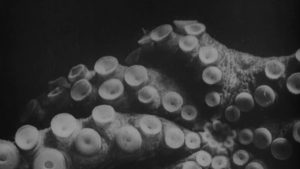
The association between this phrase (‘science is fiction’) and Jean Painlevé is perhaps now a cliché. All the same, we believe that the phrase may hold a key truth, what with our speculative assertions above about panspermia and the like (science is every bit as strange as fiction when we consider that cephalopods might genuinely be aliens living on our planet, whatever that is).
Painlevé made numerous films about animals, especially marine life, and two of the most famous are La pieuvre/ The Octopus (France, 1928) and Les amours de la pieuvre/Love Life of an Octopus (with Geneviève Hamon, France, 1967). The former is available on the Criterion channel for those with access to it, while the latter is on the magnificent UBU Web, as below.
And if you want something a bit more recent, but an engaging film about human-octopus kinship all the same, check out My Octopus Teacher (Pippa Ehrlich and James Reed, South Africa, 2020).
The Octopus: https://www.criterionchannel.com/the-octopus-1/videos/the-octopus
Love Lives of an Octopus: http://www.ubu.com/film/painleve_amours.html
Buster goes under: The Navigator (Buster Keaton with Donald Crisp, USA, 1924 (2)
Four of our limbs are currently developing a stand-alone essay on Buster Keaton’s The Navigator (with Donald Crisp, USA, 1924) as an example of chthulucinema, not least because the octopus, like the natives whom involuntary stowaway Rollo Treadway encounters in his aquatic peregrinations, gets pretty harsh treatment in this film’s plotline (Buster does not make a joke out of the octopus as he does the swordfish, for example, while the natives are an unquestionable example of white cinema’s white supremacist stereotyping). All the same, together with serials featuring octopuses like Trail of the Octopus (Duke Worne, USA, 1919), this is an early example of chthulucinema, not least because Keaton is concerned with the white man’s effect on the world, as Jennifer Fay has identified in her recent Inhospitable World: Cinema in the Time of the Anthropocene (Oxford University Press, 2018).
You can see numerous versions of The Navigator on YouTube, with this being one of them:
And if you want to watch the first reel of Chapter 1 of Trail of the Octopus, you can watch it here:
Eurosquid (3)
There are a few films that feature cephalopods in what we might call the European auteur tradition, with Paolo Sorrentino’s L’uomo in più/One Man Up (Italy, 2001) and Lucile Hadžihalilović’s Évolution/Evolution (France/Belgium/Spain, 2015) being cases in point. However, we’re going to offer up here an example that does not feature cephalopods per se, but which is definitely thinking about engaging with the queer possibilities of cephalopodic love, namely Céline Sciamma’s breakthrough film, Water Lilies (France, 2007), which importantly is titled in French Naissance des pieuvres, or ‘birth of the octopuses.’
Naissance des pieuvres is also available on the Criterion channel here: https://www.criterionchannel.com/water-lilies/videos/water-lilies.
(And for a fascinating essay on Évolution, check out Joseph Jenner’s work in Film-Philosophy here: https://www.euppublishing.com/doi/pdfplus/10.3366/film.2019.0121.)
Indypus (4)
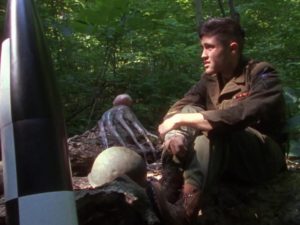
As with Euro art cinema, so with American independent cinema, where tentacles and other sorts of monsters lurk readily. Indeed, there are numerous Lovecraft adaptations that have sprung out of the American independent scene, including the Roger Corman-produced The Dunwich Horror (Daniel Haller, USA, 1970) and the recent Colour out of Space (Richard Stanley, USA/Malaysia/Portugal, 2019), which features Nicolas Cage doing his usual, but always enjoyable shit-loss routine. And of course Noah Baumbach made his name with some indy-chthulu in the form of The Squid and the Whale (USA, 2005)—with Robert Eggers providing interesting material for us to consider with his latest film, The Lighthouse (Canada/USA, 2019).
However, we are going to propose Alex Ross Perry’s first film, Impolex (USA, 2009), which was made in 7 days with a basic cast and crew of 6 for US$15,000. A partial adaptation of Thomas Pynchon’s Gravity’s Rainbow(1973), it features an octopus in a central role as the interlocutor of a nameless lost GI (Riley O’Brien) who wanders a forest with a rocket.
Impolex should be available on Fandor for those with a subscription here: https://www.fandor.com/films/impolex. Failing that, the film should be available in some regions on Amazon Prime. And you can read a nice little introduction to the film by Alex Ross Perry on no-budget indy distribution site No Budge here: http://nobudge.com/main/2014/6/11/alex-ross-perrys-debut-impolex.
Latin Monsters (5)
Tentacular creatures are a staple in the work of Guillermo del Toro, while there is a case to be made about the appearance of cephalopods in Latin American cinema more generally. We are going to mention only three examples, though, two of which are available online.
The first, sadly unavailable, is Rubén Imaz’s Cefálopodo (Mexico, 2010), which is an intriguing story about a Basque artist obsessed with drawing cephalopods and who travels around Mexico after the loss of his partner.
The second is fellow Mexican filmmaker Amat Escalante’s La región salvaje/The Untamed (Mexico/Denmark/France/Germany/Norway/Switzerland, 2016), while the third is Argentine film, Kékszakállú (Gastón Solnicki, Argentina, 2016).
The latter is an extremely loose retelling of Béla Bartók and Béla Balázs’s one-act opera of the same name, which itself is a reimagining of the fairy tale of Blue Beard. In its almost ‘random’ and virtually plotless selection of scenes, Kékszakállú points toward what we might in further writings elaborate as ‘wormhole cinema,’ whereby scenes are woven together across space and time with little seeming to connect them except the very connection itself. As you might see, the film does also feature a couple of prominent octopuses.
The Untamed, meanwhile, is one of the most fabulously bizarre films about a tentacled alien that comes to Mexico on a comet from outer space, and which basically functions as the ultimate dildo for men and women alike. All told in the style of the most restrained auteur cinema.
You can check out The Untamed here: https://vimeo.com/ondemand/theuntamedstrand, while Kékszakállú is available here: https://vimeo.com/ondemand/kekszakallu.
How can we forget hentai? (6)
If Guillermo del Toro has a thing for tentacular creatures, then so does Korean badboy Park Chan-wook, whose Oldeuboi/Oldboy (South Korea, 2003) and Ah-ga-ssi/The Handmaiden (South Korea, 2016) alike feature prominent octopuses. And Park is not alone among Asian filmmakers to think about tentacles, for if we start to include the hentai or ‘weird’ branch of Japanese anime, especially that which engages with shokushu(‘tentacles’), then we’re in for an endless ride (no innuendo intended).
A central figure in the evolution of hentai, though, is Katsushika Hokusai, whose Tako to ama/Octopuses and Shell Diver, which is often referred to as The Dream of the Fisherman’s Wife, is a woodblock print, or ukiyo-e, that appeared in Hokusai’s album Kinoe no komatsu/Young Pines in 1814.
The image (in)famously features a woman (the ‘fisherman’s wife’) being penetrated by a giant octopus, while a second, smaller specimen (referred to in the accompanying text as a relative of the first) penetrates the woman’s mouth. It is a challenging picture—as four of our eight limbs discovered when trying to use it as part of a talk in the MENA region.
But it is with this image in mind that we shall recommend Kineto Shindô’s Hokusai Manga, somewhat problematically if predictably retitled in the west as the supposedly more ‘spicy’ Edo Porn (Japan, 1981). For, this film tells the story of Hokusai’s career, and in particular how he came to create this woodblock.
Equally as interesting as the art history aspect of the film, though, is Shindô’s non-linear and oneiric storytelling style that, in addition to its presentation of woman-as-mystery-to-dimwitted-man, we think makes it of a piece with Alfred Hitchcock’s Vertigo (USA, 1958).
One can find Hokusai Manga on some unofficial streaming sites that we shan’t recommend here (you can look for them yourself), but in some territories it might well be available on Amazon Prime: https://www.amazon.com/Edo-Porn-Ken-Ogata/dp/B00AYSHUKQ.
Women make tentacular blockbusters (7)
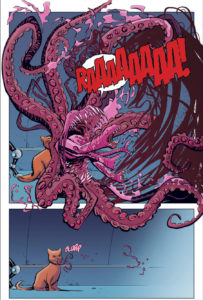
We’ve mentioned Park Chan-wook and Guillermo del Toro as being interested in things tentacular. A third name to add to that list would be Denis Villeneuve, whose Arrival (USA, 2016) was in some ways the initial inspiration for The Squid Cinema project (although in some ways we prefer his earlier Québecois feature, Maelström, Canada, 2000, which also prominently features octopuses).
However, if we are going to include some mega-blockbusters in our list, then we think it better to recommend work by women directors, even as they labour for the monopolistic Mouse. Ava DuVernay’s A Wrinkle in Time(USA, 2018) and Anna Boden’s Captain Marvel (with Ryan Fleck, USA, 2019) are thus the two films that we’ll include.
The former we mention because of its emphasis on wrinkles/folds and its tentacular lack of straightness in crossing space and time (those wormholes again—linked notably here with non-whiteness… while we’d also just note that worms are likely the common ancestor between humans and cephalopods, as well as being inhabitants of the mud that will form the focus of a further project that, world and time permitting, we have forthcoming).
Meanwhile, the latter features a Flerken, a humorous combination of octopus and cat that also at one point eats a tesseract while being held by a digitally rejuvenated Samuel L. Jackson. The digital time-shimmering flimflam going on in that image alone is worthy of a separate essay (although such an essay is as-yet unplanned on our part—so here’s hoping someone steps up to write it).
A Wrinkle in Time can be bought to download here: https://movies.disney.com/a-wrinkle-in-time. And Captain Marvel is available for viewing on Amazon Prime (region permitting) here: https://www.amazon.com/Marvel-Studios-Captain-Brie-Larson/dp/B07P68DTRW.
Chthulutelevision (8)
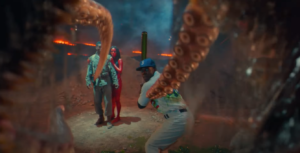
Since we are in the full midst of writing ∞O (Infinite Ontology), we cannot really pass up the chance to recommend a couple of shows that feature things tentacular and cephalopodic, even if we are of course opening up a new can of worms (pun intended), in that there are constellations of shows that could be included…
Indeed, some have argued that the contents of the titular ‘Jar’ in season 2 episode 17 of Alfred Hitchcock Presents… (Norman Lloyd, USA, 1964) is an octopus, as well as being an allegory for the idiot box itself via which most humans will have seen that episode.
However, with that historical morsel left to bait you, we’ll recommend Brit Marling and Zal Batmanglij’s The O.A. (USA, 2016-2019), which in season 2 episode 4, ‘Syzygy,’ features a Giant Pacific octopus called Old Night, who provides the eponymous character (played by Marling) with information about her trans*dimensional identity…
… as well as Damon Lindelof’s Watchmen (USA, 2019), which weaves together a complex story about race riots, vigilantism, parallel universes and more—as squids giant and small fall from the sky and rain down on human ‘civilization.’ (Although we would recommend Viet Thanh Nguyen’s essay on the problematic depictions of Vietnam and the Vietnamese in the show.)
This is not to mention Lovecraft Country, which is co-produced by the busy Jordan Peele and J.J. Abrams, and which is currently being rolled out on HBO, Crave, Sky Atlantic, NowTV and various other content providers, depending on your region. But we’ll leave that for another occasion—namely ∞O (Infinite Ontology) itself.
In the meantime, obviously, it is also your duty to go and read The Squid Cinema from Hell. As David Martin-Jones says in his puffery about the book, which you can buy spineless on the EUP website to which we linked above, ‘[o]ne day we may end up living under water, and if so, this may be the survival manual we all need.’
The O.A. can be seen on Netflix here: https://www.netflix.com/watch/80103819?trackId=200257859. And Watchmen can be seen, among other places, on HBO here: https://www.hbo.com/watchmen/season-1.
***
William Brown is an Honorary Fellow in Film at the University of Roehampton, London. He is co-author of The Squid Cinema from Hell: Kinoteuthis Infernalis and the Emergence of Chthulhumedia with David H. Fleming (EUP, 2020), and the author of Non-Cinema: Global Digital Filmmaking the Multitude (Bloomsbury, 2018), and Supercinema: Film-Philosophy for the Digital Age (Berghahn, 2013). William is also the maker of various no-budget films and film-essays, and currently is working on two books, one about ‘infinite ontology’ and ‘chthulutelevision,’ and another about mud and media.
David H. Fleming is Senior Lecturer in Film & Media at the University of Stirling, Scotland. His interdisciplinary research often engages with the outsides and material intersectionalities of images, technology, events and philosophy. He is co-author of The Squid Cinema from Hell: Kinoteuthis Infernalis and the Emergence of Chthulhumedia with William Brown (Edinburgh University Press, 2020), and Chinese Urban Shi-nema: Cinematicity, Society and Millennial China (Palgrave, 2020) with Simon Harrison. He is also the author of Unbecoming Cinema: Unsettling encounters with ethical event films (intellect, 2017). David is currently working on online lectures for the new term, but is hoping to return to writing books on infinite ontology and ‘chthulutelevision,’ as well as media and mud.
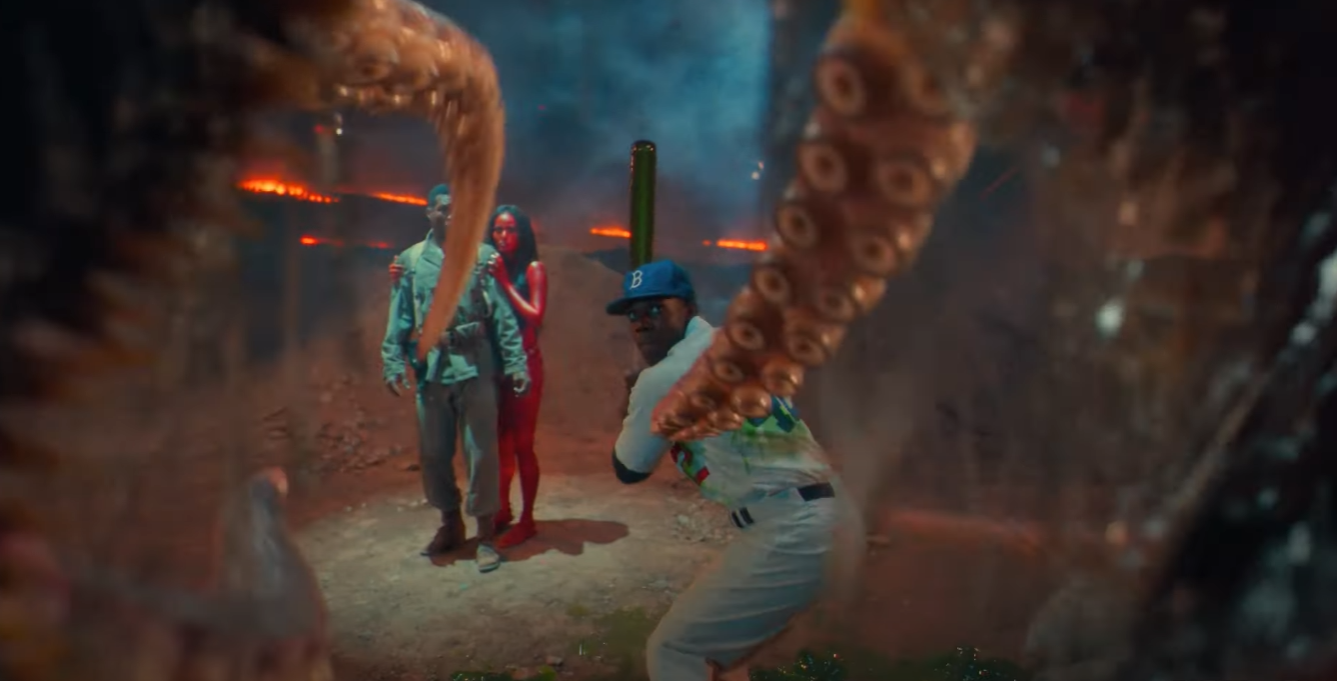
I love your blog. I have already recommended this post to some of my friends. Great work and appreciable.